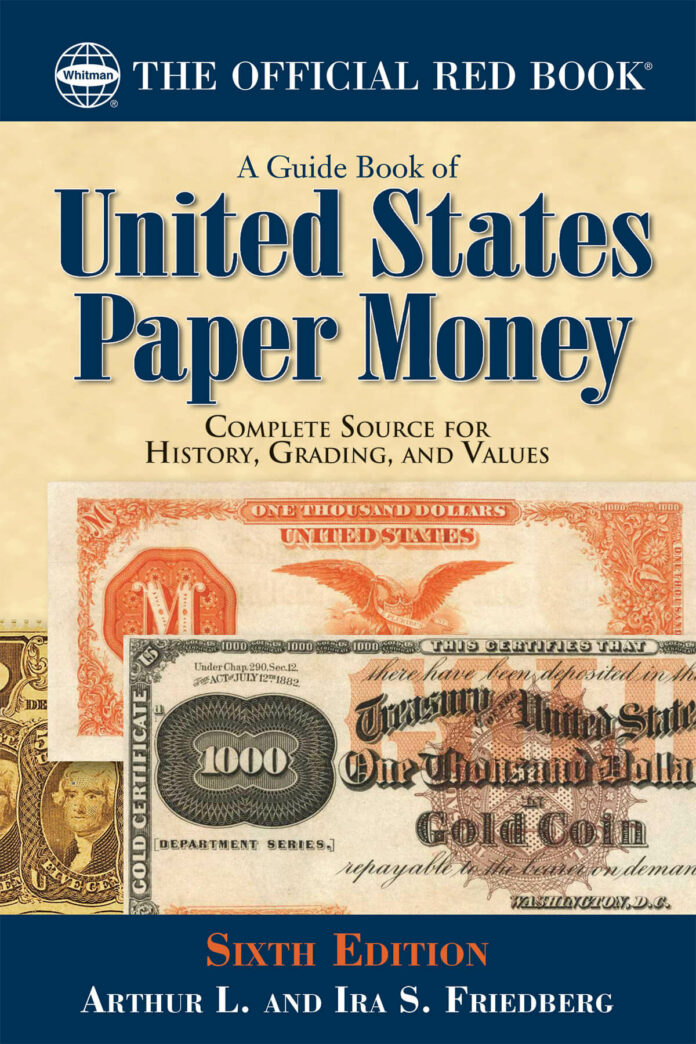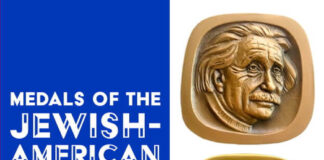
An updated and revised sixth edition of the Guide Book of United States Paper Money is available now. The new book is a history and price guide of the paper currency of the United States dating from Civil War federal issues to present-day cash, plus related issues.
The Guide Book of United States Paper Money describes in detail thousands of federally issued notes – not just valuable rarities like the Demand Notes of 1861, but also currency found in our wallets today. An introduction by David L. Ganz explores topics such as the $2 bill, star notes, and World War II notes; American money in the Civil War; the Bureau of Engraving and Printing; how cash is designed, printed, and distributed; how to collect, store, and care for paper money; grading standards; and the many kinds of federal paper money printed from the 1860s to today’s Series of 2017 Federal Reserve Notes with signatures of U.S. Treasurer Jovita Carranza and Treasury Secretary Steven Mnuchin. The authors cover recent developments in the hobby. They discuss the Treasury Department’s changing approach to redesign of the $20 bill using a portrait of abolitionist Harriet Tubman (as well as recently postponed plans to include images of women on the $5 and $10 bills).
On the market side, the book combines the standard Friedberg cataloging system with retail values in multiple grades for each note.
Remarking on today’s marketplace, Arthur Friedberg said, “Great rarities know no price limits on the few occasions that such specimens appear for sale. When they sell, the resulting publicity offers a boost to the entire market. Meanwhile, small-size type notes (non-Federal Reserve notes) are approaching a level of interest formerly held by their large-size counterparts.” He described star notes (replacement notes) as being underappreciated, noting that “The market for Federal Reserve $1 notes affords collectors an opportunity to build their collections at face value by searching though what they receive in circulation.”
Authors Arthur and Ira Friedberg are well known in the numismatic world. They have been professional numismatists for more than 30 years. Both joined their father’s family firm, The Coin & Currency Institute, after college. Since then they have established themselves as award-winning authors, coin dealers, researchers, and numismatic consultants to numerous governments and organizations.
The Guide Book of United States Paper Money covers notes from $1 to $10,000 face value; Fractional Currency; Treasury notes of the War of 1812; encased postage stamps; error notes; signatures on U.S. currency; uncut sheets; and other hobby topics. It includes a glossary and a bibliography for further research.
The book may be borrowed for free as a benefit of membership in the American Numismatic Association, through the Dwight N. Manley Numismatic Library. ANA members receive a 10% discount on copies purchased from Whitman Publishing, the Association’s Official Supplier.
The book is available on the Whitman Publishing website.
The first edition of the Guide Book of United States Paper Money was published in 2005, with updated editions released in 2007, 2010, 2014, and 2016.



